Bastar Dialogue is a series of activities that started in mid-2018 with the aim of bringing a negotiated settlement to the 50-year Maoist insurgency in Central India. After having successfully organised a padyatra, a cycle yatra, and an e-rally via zoom, work is underway for the seventh Bastar Dialogue which will be preceded by a victims meet.
BASTAR DIALOGUE – I: Vikalp Sangam
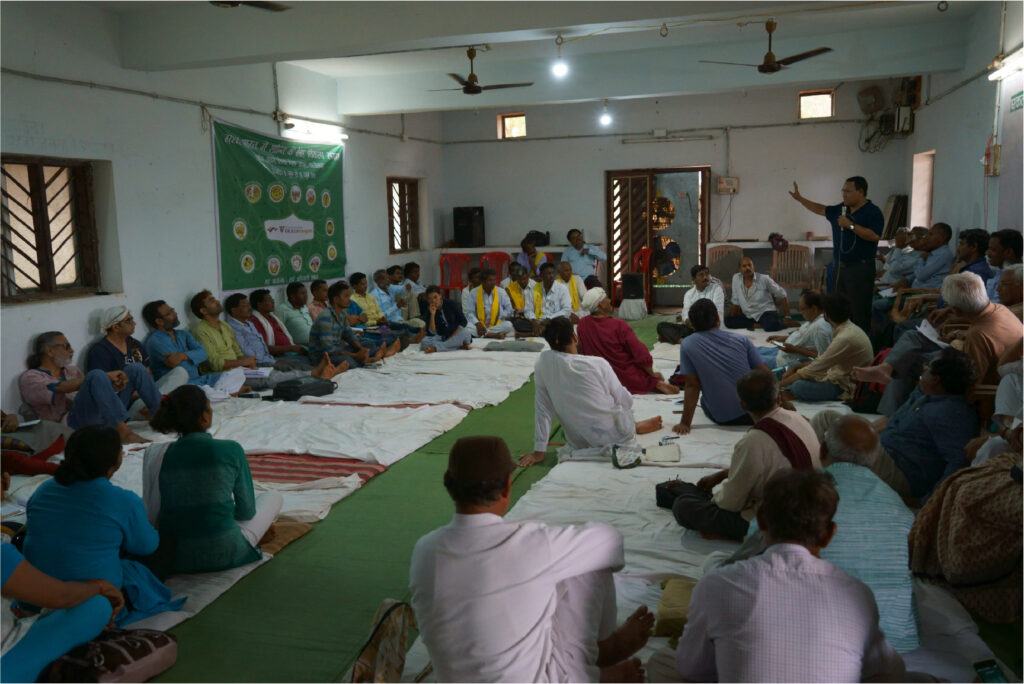
The new peace process commenced with the first Bastar Dialogue, a three-day consultation event held at Tilda, Chhattisgarh on 8th June 2018. Just before the December election of 2018, combined efforts by some Left-leaning intellectuals, peace activists, non-governmental organisations and civil society and tribal leaders of Bastar were aimed at opening channels of communication between representatives of the state government and the Maoist rebels.
With the central theme of the event being “Finding an alternative path”, The tribal communities caught in the crossfire were the focus of the meeting at Tilda and tribal groups from northeastern states, Andhra Pradesh-Telangana, Jharkhand, Maharashtra came down to Chhattisgarh.Self-rule/autonomy in tribal areas was discussed with emphasis on the 6th Schedule of the constitution. The Bodoland autonomous council, healthcare and educational facilities in Naxal areas and need for tribal leadership to emerge were scrutinised heavily.
Among many, the key speakers included the Chairman for the National Commission of Scheduled Tribes (NCST), Nand Kumar Sai; the pioneer of peace negotiations, Prof. Hargopal; former Central Cabinet Minister Arvind Netam; former Chhattisgarh Finance Minister Ramchandra Singhdeo; former Madhya Pradesh Chief Secretary Sharad Chandra Behar; Deshbandhu Chief Editor Lalit Surjan; Prof. Madhulika Banerjee; and BPS Netam of Sarv Adivasi Samaj. Activists and journalists including Deme Oraon, Devji Tofa, Manimala, Albert Kindo, Anil Ekka, Pramod Boro, Sanat Chakraborty, Dr Amit Ranjan Basu, Korenge Laxman Rao, Sidam Arju, C.R. Bakshi, Manish Kunjam, VB Chandrasekhar, Mohan Hirabai Hiralal, Milind Wani, Ajay T.G., Shubranshu Choudhary, Raghavachari, Shravan Garg and Goldy M George addressed the gathering. All the speakers expressed their concern for violence in Central India and advocated community-based growth and peaceful living of Adivasis, Dalits and other communities.
VB Chandrasekhar proposed undertaking a 200km yatra from Andhra Pradesh to Jagdalpur, symbolic to the route taken by Maoists in 1980. This non-partisan walk would facilitate dialogue as opposed to confrontation. Another key discussion point was the relevance of existing mass media platforms and cultural initiatives that are happening in Central India and how they can be mobilised further to promote peace. Two prominent initiatives were Deepa Kiran’s session on storytelling which emphasised on the need to shift the storytelling paradigm from far removed English speaking western concepts to more experience-based stories, and CGNet’s groundbreaking work on the democratisation of media.
As per the report on proceedings of Vikalp Sangam, the 3-day event ‘engaged in understanding the various non-violent alternatives created by people in the field, such as strengthening gram sabhas under PESA (Panchayats Extension to the Scheduled Areas (PESA) Act 1996); getting access to rights, privileges and dues under Forest Rights Act (FRA); undertaking a padyatra advocating for peace, and creating alternative models in education, health, media, agriculture and cottage industry. The Sangam was an endeavour to envision an alternative future for the Adivasis, Dalits and the poor through strengthening egalitarianism in self-rule and eco-centric development practices.’
A look at the participants in this Vikalp Sangam on peace in central India exemplified the philosophy of Kalpavriksha, of having a diverse cross-section of participants. A poll undertaken on the third and final day of the event revealed that there were 70 people from 11 states, and a majority of people (73%) were from rural India.
BASTAR DIALOGUE - 2: Shanti Padyatra
After establishing that the Peace Process should be helmed by the Adivasi community, Adivasis from the Gond community of Telangana assumed the leadership role. One of the key decisions made at Bastar Dialogue 1 was undertaking an 11-day Shanti Padyatra from October 2nd 2018, the start of Gandhi’s 150th birth anniversary. Over 150 Adivasis participated in the 190 km padyatra from Chatti to Jagdalpur.
The march was concluded with a two-day conclave- Bastar Dialogue 2, organized in Jagdalpur on October 12th and 13th, 2018, to commemorate the end of the padyatra and discuss the way forward. 160 people attended the conclave, including academicians, bureaucrats, individuals, community elders and leaders, scholars, human rights activists, journalists and the 130-odd padyatris from Chhattisgarh, Andhra Pradesh, Madhya Pradesh, Telangana and Maharashtra who had walked the entire stretch for 10 days.
A pioneering initiative in its own right, the padyatris walked the same route through which Naxalites had entered Dandakaranya from seven different openings in 1980, and appeal for peace from all sides.
Shubhranshu Choudhary, one of the organisers stated,” As many as 12,000 people have died in the past 20 years due to exchange of fire between government forces and Maoists. Among 12000 people, 9300 were Adivasis, the original inhabitants of the land.”
The then spokesperson of Communist Party of India (Maoists) Dandakaranya Special Zonal Committee, had issued a statement wherein he appealed to boycott the new peace process and its aides such as Shubhranshu Choudhary, stating that the march was a move to stop Bastar tribals from fighting for their jal, jungle, zameen. Despite the boycott call being issued a day before the peace march, driven by their motivation, the padyatris bravely held the front and commenced the march.
The sole purpose of Bastar dialogue 2 was not just peaceful negotiations, but it also aimed at initiating discussions around Adivasi education, healthcare and laws pertaining to their welfare.
“This peace process is long-drawn and would require time to achieve its ultimate aim of establishing peace and self-sustenance. Even if one life is saved through this peace process, it would be considered as a success”, Shubhranshu added.
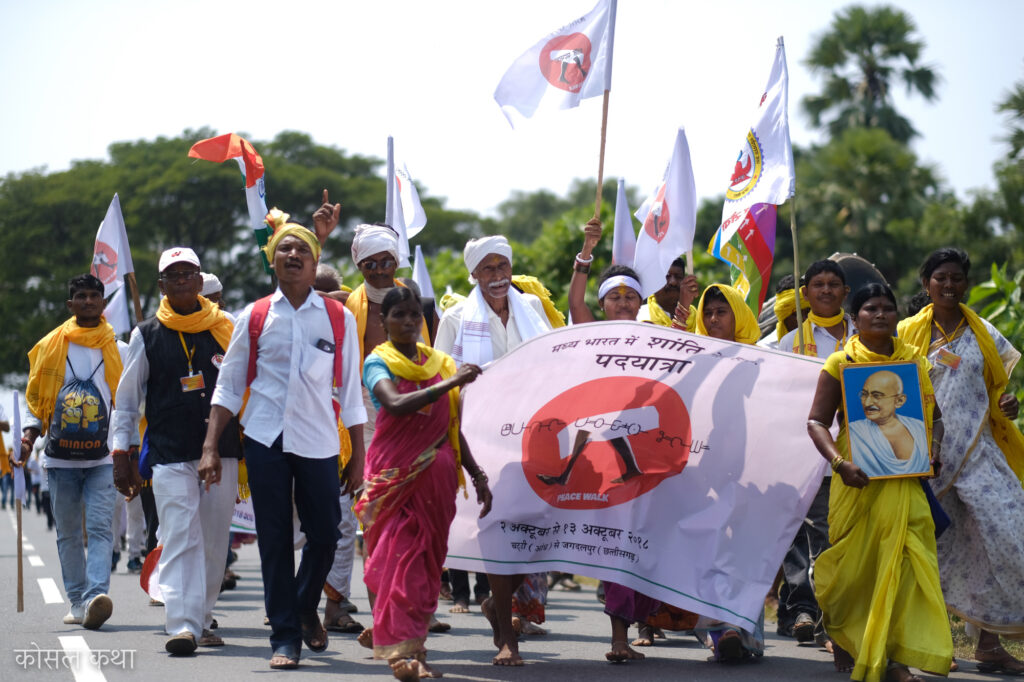
BASTAR DIALOGUE - 3: Cycle Yatra
The third Bastar dialogue was conducted on the 2nd and 3rd March in Banjari, Raipur. The two points of discussion for this event were- rehabilitation of 30,000 IDPs (internally displaced people), around 5000 families, who were forced out of their homelands during the Salwa Judum and could never find a way back home; and appealing to revisit the findings of the Nirmala Bench Committee, review and fast-track cases of Adivasis that had been wrongly incarcerated.
The third leg of this peace process was preceded by a cycle yatra, wherein 300 participants cycled for 300km from Jagdalpur to Raipur. The week-long bicycle procession started on 22nd Feb.
Shubhranshu Choudhary, a journalist and one of the key organisers of the event said that if the government accepts the demands of IDP relocation and release of innocent tribal people wrongfully incarcerated as Naxals, it can reinstate the tribal population’s trust in the government and facilitate a conducive atmosphere for dialogue between the state and locals who have turned against the government.
Chhattisgarh MLA and Tribal Minister Shri Kawasi Lakhma graced the event on the second day and patiently lent an ear to the requests and problems put forth by the Adivasis and IDPs.
The Cycle Yatra (and Bastar Dialogue 3) helped focus media attention on the problems faced by the disenfranchised and marginalised victims of Maoist conflict and Salwa Judum. As a result of the landmark cycle yatra and Bastar Dialogue 3, Chief Minister Bhupesh Singh Baghel directed that the tribal families affected by the Salwa Judum should be safely rehabilitated in their villages.
The cycle yatra was organized in association with Sitara, an NGO in Andhra Pradesh that works with Adivasis from Chhattisgarh that have been displaced by violence, and several other NGOs working for Adivasi rights, including Chhattisgarh Sarv Adivasi Samaj, Adivasi Mahasabha, Akhil Bharitya Gondwana Gond Mahasabha, Koya Kutma, Dhurva Samaj, Bastariya Samaj, Bhatra Samaj, Gondwana Raj Gond Samiti (Telangana) and Sabari Gandhi Ashram (Andhra Pradesh).
On April 25, 2019, 24 families that fled the Maraiguda village in Chhattisgarh’s Sukma district and settled in Andhra as agricultural labourers, more than a decade ago, returned to their roots.
“The families decided to return as they were unable to start afresh in Andhra, where they weren’t recognised as from scheduled tribes. Before fleeing, they owned land in their village; there they were landless and did not have identity cards,” said Shubhranshu Choudhary who played a prominent role in the rehabilitation process. Raju Rana, also involved in the movement, added, “Fearing Salwa Judum, they fled Chhattisgarh in 2006. The Police thought they were Maoist sympathizers and the Naxalites believed they were in support of the Police forces. They were attacked upon, their houses were burnt and many were even killed in the ensuing violence.”
BASTAR DIALOGUE - 4: Pen Pandum
Pen Pandum which translates to ‘Festival of the Gods’ in the local Gondi language began in Konta on 12th and 13th of June 2019. The session commenced with a long series of prayers by five native priests, led by Sher Singh Achala. In the presence of more than 300 tribals, he invoked the Gods of 644 abandoned villages, praying for support for those displaced by conflict, as they look for more settled lives.
To commemorate the lost euphony of drums in the conflict-ridden areas, the participants danced late into the night. The next day the first application forms for new homes were completed by 350 tribals displaced by violence who wished to be rehabilitated under 3.1(m) of the Forest Rights Act, under which Scheduled Tribes and other traditional forest dwellers are entitled to “in situ rehabilitation including alternative land in cases where they have been illegally evicted or displaced from their forest land.”
In the case of IDPs and Adivasis, the land they earlier possessed and fell into Maoist territory could be exchanged for safer land along the highway.
BASTAR DIALOGUE - 5: Pen Patta
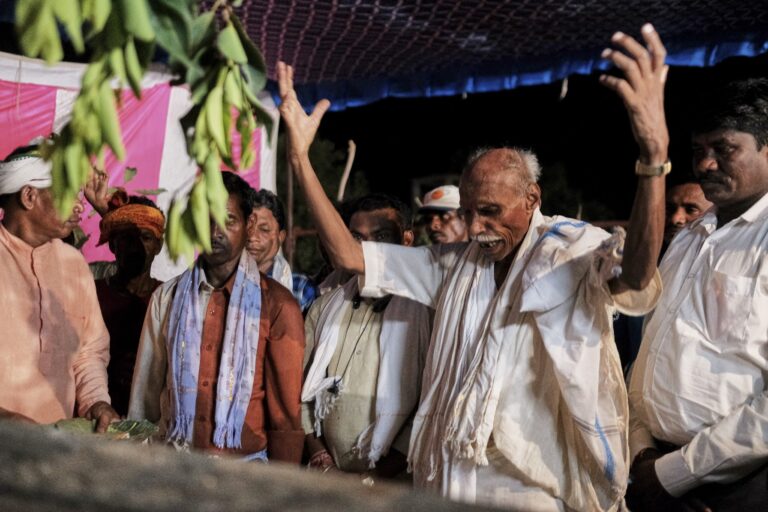
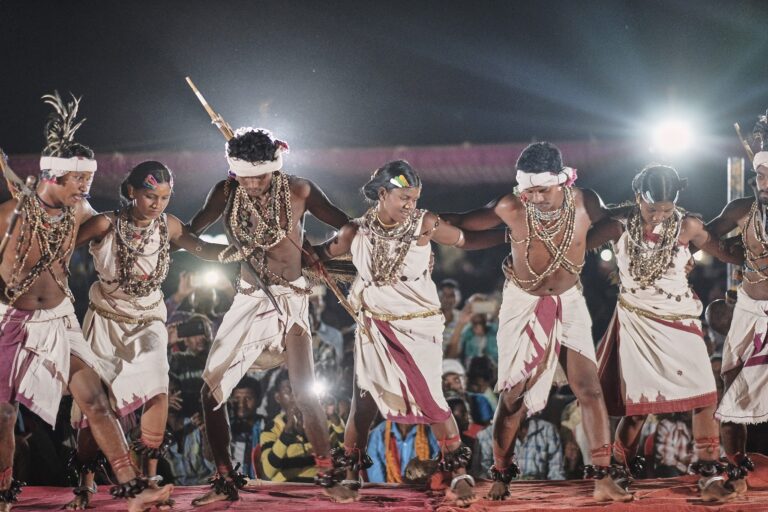
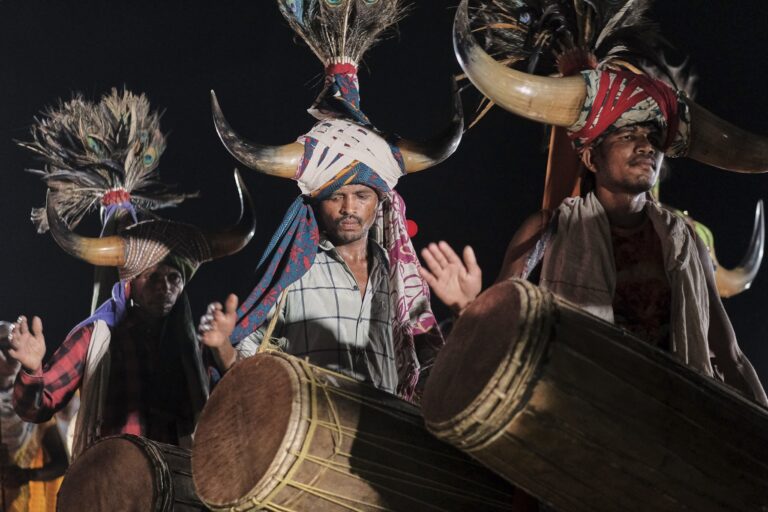
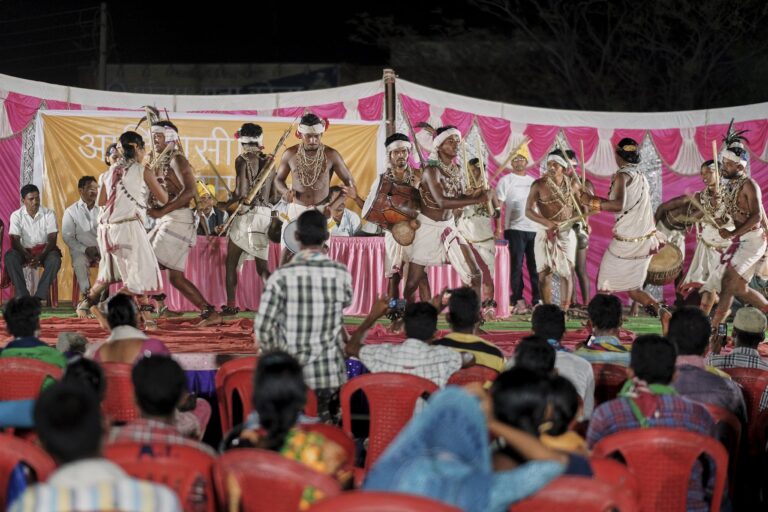
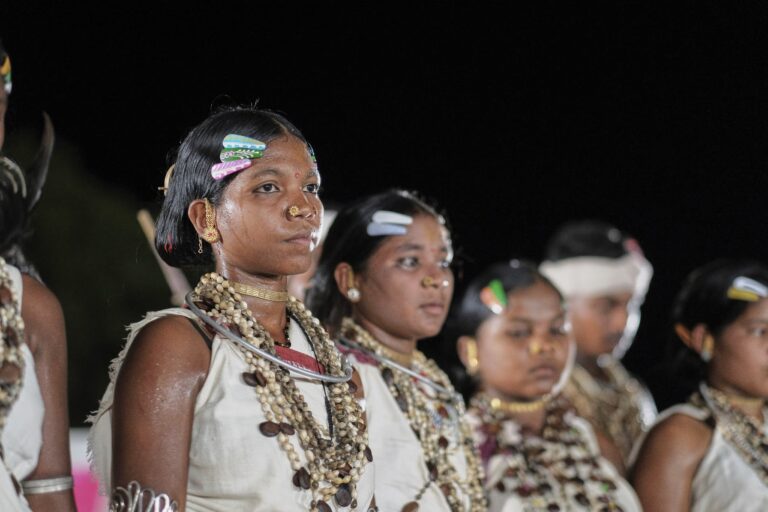
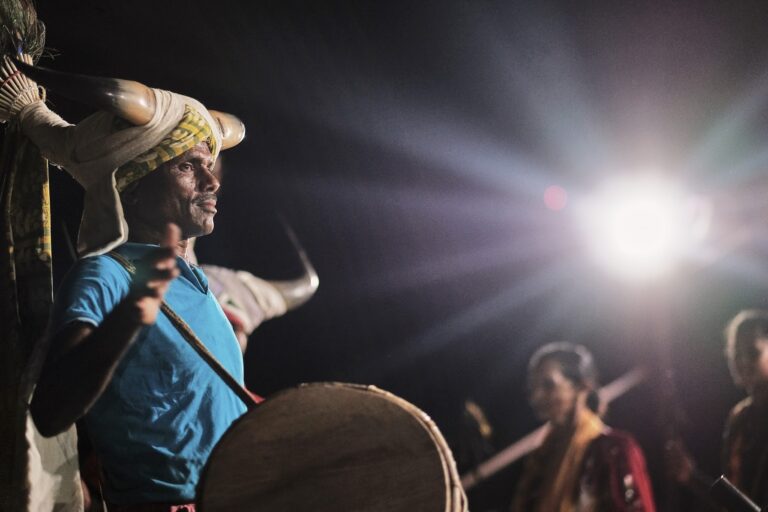
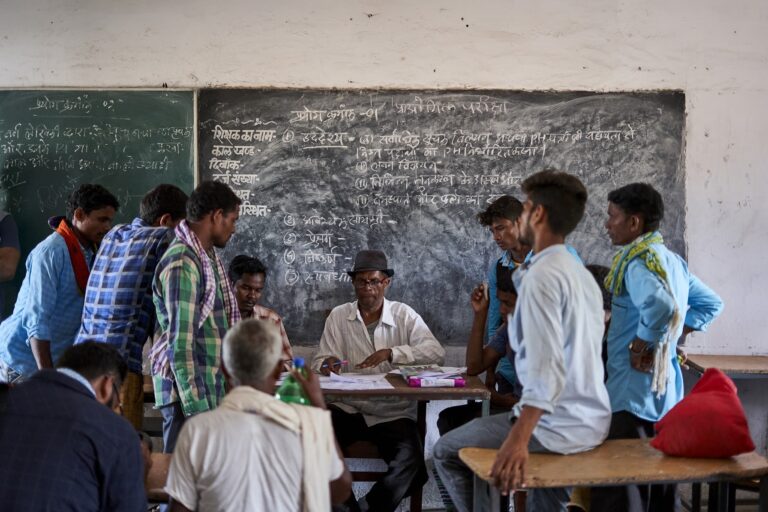
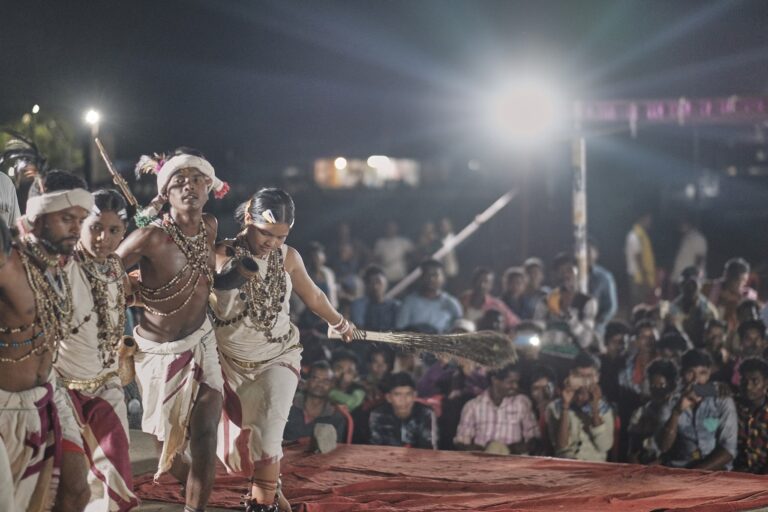
Bastar Dialogue 5 consisted of a series of four meetings in Abujhmad from 22nd June 2019 till September 2019 with the purpose of granting community habitat rights to the primitive vulnerable tribal groups (PVTGs) under section 3.1(e) of the Forest Rights Act.
Abujhmarh, a landmass spread over 4000 square kilometers, is a Maoist den, its inaccessibility serving as a safe haven for the rebels. A small part of it is also in Gadchiroli district of Maharashtra where the Abuzhmadia tribals originally resided, which is included in the list of Government of India Extreme Backward Tribes Group (PVTG).
“One of the planks on which Chhattisgarh Maoists have sought and secured support from local communities is the threat that the state may uproot them from their lands,” says Shubhranshu Choudhary, founder of CGnet Swara.
Abujhmarh consists of 237 villages under 36 gram panchayats. A government survey in 2016 found the number of Abujhmarias to be 23,076; the total population, including settlers, being over 40,000. Land settlement was done in 1928-29 and again in 1954-55, but Abujhmarh was left out, probably because of the difficult topography,” as stated by Narayanpur collector Padum Singh Alma. “Now, many areas have been rendered inaccessible or unsafe because of the presence of the Maoists.”
Village boundaries need to be defined while issuing habitation rights.
After Pen Pandum, the organising team met a group of educated youth of the Abujhmadia community, but to their surprise none of the individuals were aware of their Habitat Rights. With the consent of leaders of the Abujhmadia community, 70 people of the community gathered at Madia Bhawan, Narayanpur on 22 June 2019 and decided to take this process forward. This leg of Bastar Dialogues was named Pen Patta. After 4 meetings, with administration involvement, the Maoists opposed the process and issued a death sentence for the head of the Abujhmadia society, Ramji Dhruv.
The community is still working under Pen Patta. Village boundaries need to be defined while issuing habitation rights.
Hence, under Bastar Dialogue 5, some Abujhmadias got together with the New Peace Process in Central India and have been trying to fill a self made form to apply for their Habitat Rights.
BASTAR DIALOGUE - 6
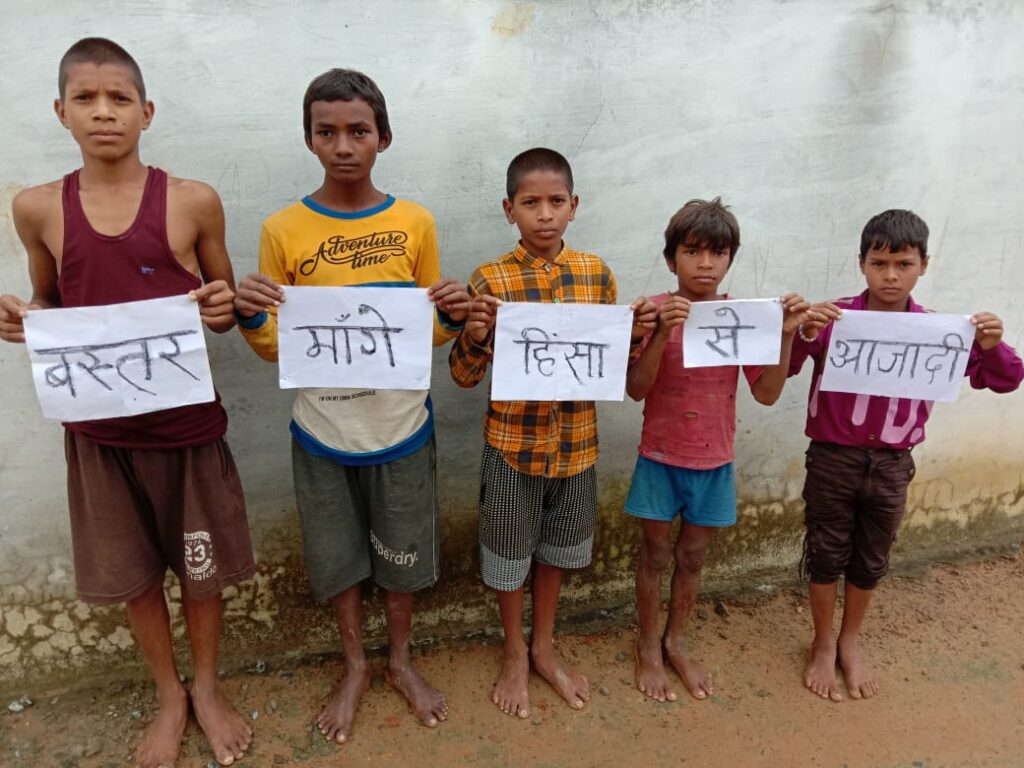
The sixth edition of Bastar Dialogues, retitled the ‘New Peace Process’ was conducted on zoom by means of an e-rally. The aim was to initiate a dialogue about peace and get various victim families (of Maoist and Police conflict) to connect with each other. Speakers from both rural and urban areas participated in this multilingual conclave to embrace the Gondi language. In collaboration with Google, and SIL International, New Peace Process launched the first ever unicode font for Gondi during the event.
Given that 90% maoists communicate only in Gondi, in order to reason with them, it is essential that we invest in the language.
The 9 hour long event concluded with the declaration of results for the opinion poll ‘How should the 50 year old Maoist insurgency be resolved- peaceful settlement or military intervention?’
Out of the total 3760 votes recorded, 91.88% voted for peaceful resolution, further reaffirming our faith in the movement with the resolve of continuing Bastar Dialogues.

